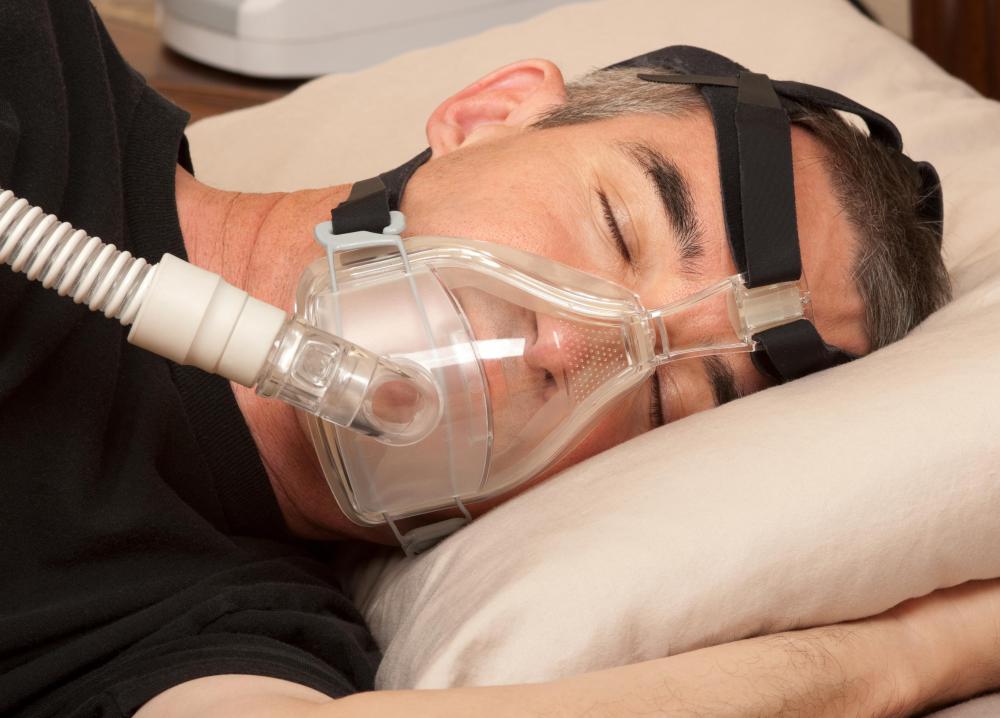At WiseGEEK, we're committed to delivering accurate, trustworthy information. Our expert-authored content is rigorously fact-checked and sourced from credible authorities. Discover how we uphold the highest standards in providing you with reliable knowledge.
What are the Different Types of Therapy for Sleep Apnea?
There are different types of therapy for sleep apnea, and treatment is designed on an individual basis. Once a diagnosis has been made, there are several different types of therapy for sleep apnea that can greatly improve a patient's quality of life and sleep. These include lifestyle changes, mouthpieces or dental devices, machines to assist breathing, or surgery.
Sleep apnea is a serious disorder where the patient's breathing stops and resumes multiple times during a night's sleep — frequently more than 100 times — due to a blocked airway or a lack of signals from the brain. As a result of the constant interruptions to restful sleep the patient is often deeply fatigued, and has difficulty functioning in a normal manner.

With milder cases, the effective therapy for sleep apnea is to make lifestyle changes, also known as conservative therapy, designed to help keep the airway open during sleep. For overweight patients, losing some weight is sometimes all that is needed to relieve apnea symptoms. Sleep position can make a difference as well. Patients are often advised to avoid sleeping on their backs and try side sleeping to help keep the airway open. Other lifestyle changes that can help are avoiding alcohol and sleeping pills, which both make it harder for the throat to stay open, and quitting smoking.

Another type of therapy for sleep apnea is wearing a dental device or mouthpiece during sleep. This is more effective with mild cases. A dentist or orthodontist with experience treating sleep apnea can custom design a mouthpiece that adjusts the position of the jaw and tongue during sleep. The proper positioning will help to keep the patient's airway open and prevent apnea episodes.

More severe cases will need more aggressive types of therapy for sleep apnea. One treatment is the use of a machine to assist the patient in breathing during the night. The most common type is called a continuous positive airway pressure, or CPAP. When using a CPAP, the patient wears a mask over his or her nose and mouth that is connected to a machine that provides a continuous flow of air. The pressure of the flowing air presses on the airway walls and keeps it open so the patient continues breathing.

There are also several surgical options for therapy for sleep apnea. If the patient has enlarged tonsils that could be blocking the airway these can be removed. A patient can have nasal surgery to correct issues that may be affecting breathing, such as a deviated septum. Another type of surgery is called uvulopalatopharyngoplasty and it involves widening the airway by removing soft tissue from the back of the palate and the throat. Other surgeries can involve correcting the position of the jaw, or other abnormalities of the face and throat.
AS FEATURED ON:
AS FEATURED ON:















Discuss this Article
Post your comments